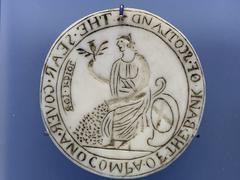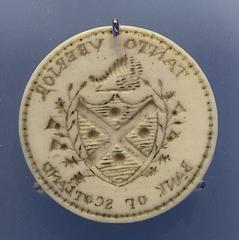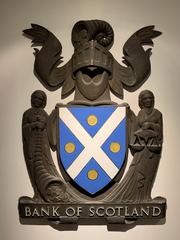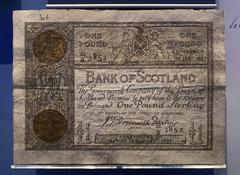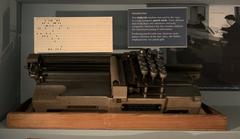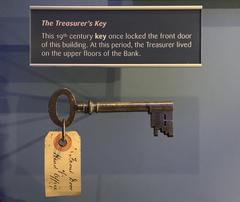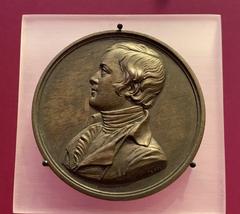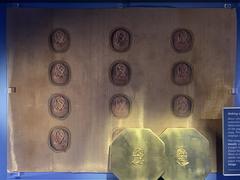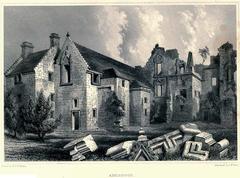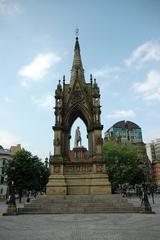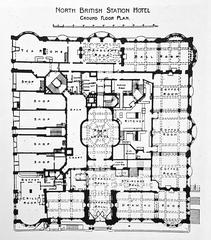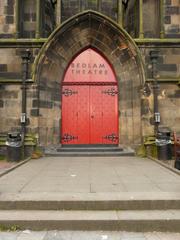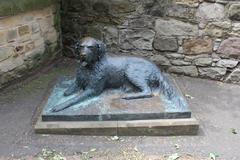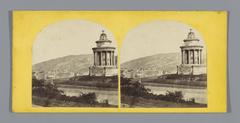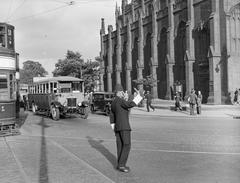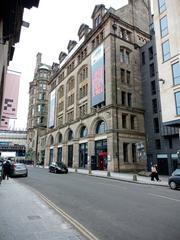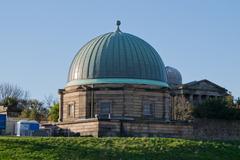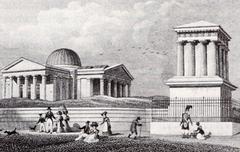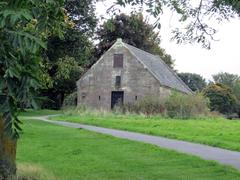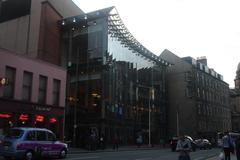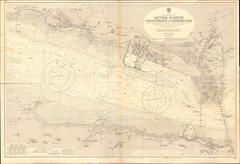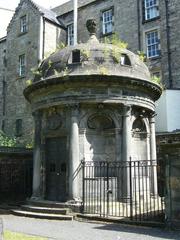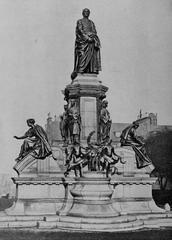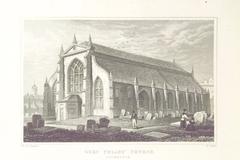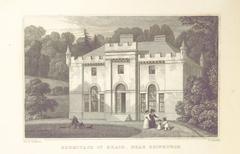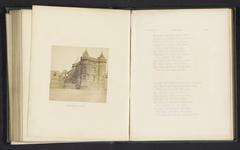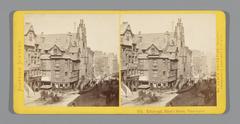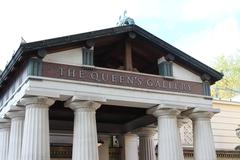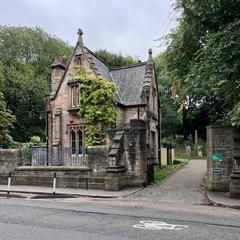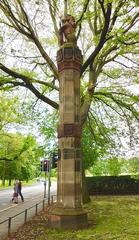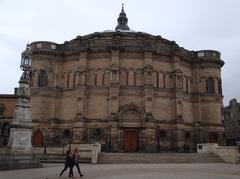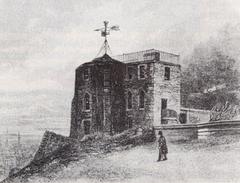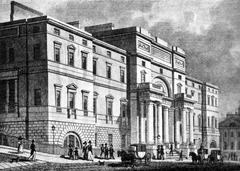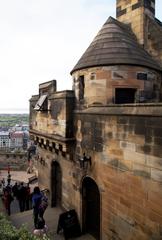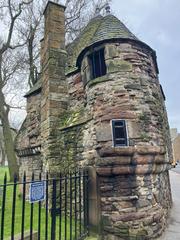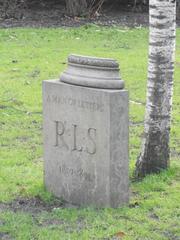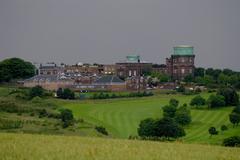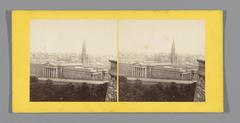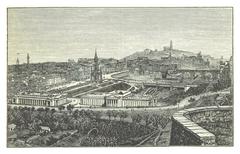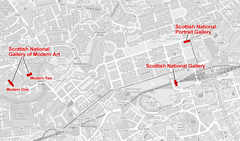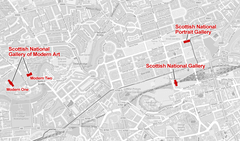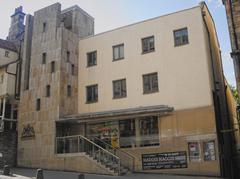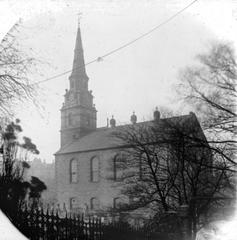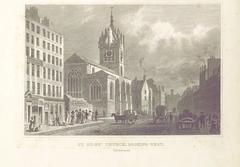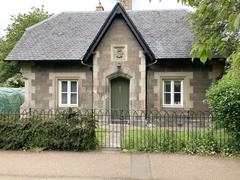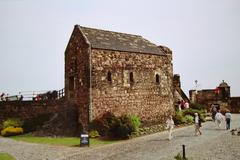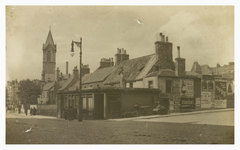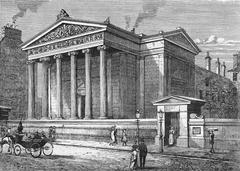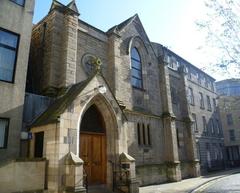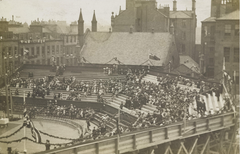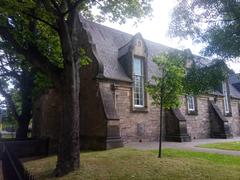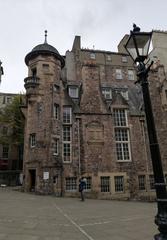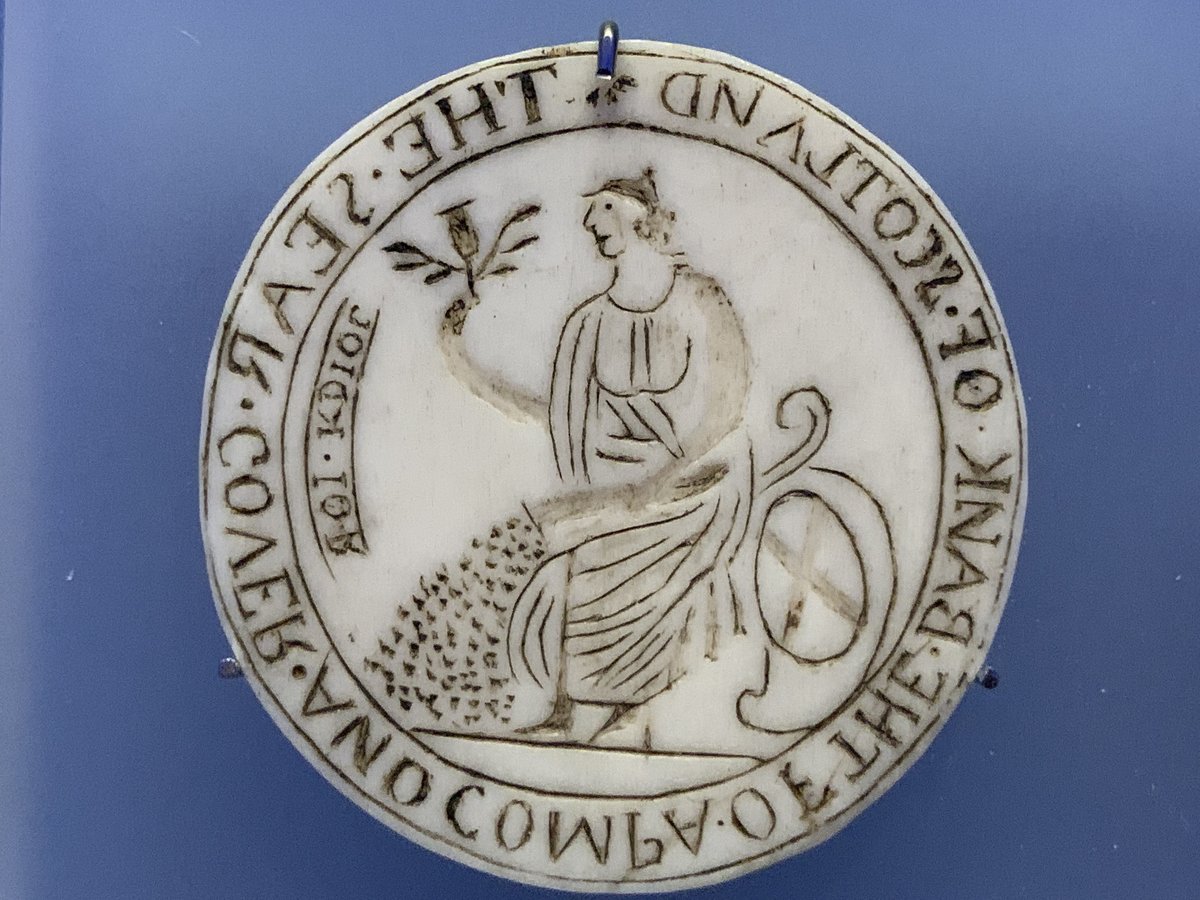
Bank of Scotland Edinburgh Visitor Guide
Date: 19/07/2024
Introduction
Visiting the Bank of Scotland in Edinburgh offers a unique blend of financial history, architectural grandeur, and cultural enrichment, making it a must-see destination for both tourists and locals. Established by an Act of the Scottish Parliament on July 17, 1695, the Bank of Scotland is one of the oldest banks in the world. Its historical significance is further underscored by its role as the first bank in Europe to successfully issue paper currency (source). Located prominently on The Mound, the Bank of Scotland’s headquarters are not just a financial hub but also an architectural landmark designed by David Bryce, completed in 1868. The Victorian architecture, featuring Corinthian columns and a domed roof, has become a symbol of stability and enduring presence in the heart of Edinburgh (source). Visitors can explore the Museum on the Mound, which offers free admission and a wide array of exhibits that delve into the history of money, banking, and the Bank of Scotland’s pivotal role in shaping the Scottish economy (source). Additionally, the Bank of Scotland has had a profound impact on Scottish culture, supporting various cultural and sporting events, and contributing significantly to the economic development of Scotland. This guide provides a comprehensive overview of what you can expect when visiting, including practical information on visiting hours, ticket prices, nearby attractions, and accessibility, ensuring a memorable and enriching experience.
Table of Contents
- Introduction
- Founding and Early Years
- 18th Century Developments
- 19th Century Expansion
- 20th Century Challenges and Innovations
- Merger and Modern Era
- Architectural Significance
- Cultural Impact
- Notable Figures
- Technological Advancements
- Economic Contributions
- Visitor Information
- FAQ
- Conclusion
Founding and Early Years
The Bank of Scotland was established by an Act of the Scottish Parliament on July 17, 1695, making it one of the oldest banks in the world. The bank was founded primarily to support Scottish trade and industry, and it was the first bank in Europe to successfully issue paper currency. The initial capital of the bank was £1,200,000, a substantial sum at the time, raised through the sale of shares. The bank’s first governor was John Holland, an Englishman, highlighting the early cross-border financial relationships the bank fostered.
18th Century Developments
During the 18th century, the Bank of Scotland played a crucial role in the economic development of Scotland. It provided loans to various industries, including the burgeoning textile and shipbuilding sectors. The bank also expanded its operations by opening branches in key Scottish cities such as Glasgow and Aberdeen. This period saw the bank navigating through various economic challenges, including the Jacobite uprisings, which posed significant risks to its operations. Despite these challenges, the bank continued to grow, solidifying its position as a cornerstone of the Scottish economy.
19th Century Expansion
The 19th century was a period of significant expansion and innovation for the Bank of Scotland. In 1826, the bank introduced the first savings bank in Scotland, aimed at encouraging thrift among the working classes. This initiative was part of a broader movement to make banking services accessible to a wider segment of the population. The bank also played a pivotal role in financing the construction of railways, which were crucial for the industrialization of Scotland. By the end of the 19th century, the Bank of Scotland had established itself as a major financial institution with a network of branches across the country.
20th Century Challenges and Innovations
The 20th century brought both challenges and innovations for the Bank of Scotland. The two World Wars had a profound impact on the bank’s operations, with many of its staff serving in the armed forces. Despite these disruptions, the bank continued to innovate, introducing new financial products and services. In 1959, the Bank of Scotland became the first bank in the UK to install a computer for processing accounts, marking the beginning of the digital age in banking. The latter half of the 20th century saw the bank expanding its operations internationally, establishing a presence in North America and Asia.
Merger and Modern Era
In 2001, the Bank of Scotland merged with Halifax to form HBOS (Halifax Bank of Scotland), creating one of the largest banking groups in the UK. This merger was part of a broader trend of consolidation in the banking industry, aimed at achieving economies of scale and enhancing competitiveness. However, the global financial crisis of 2008 posed significant challenges for HBOS, leading to its acquisition by Lloyds TSB in 2009. Today, the Bank of Scotland operates as a subsidiary of Lloyds Banking Group, continuing to serve its customers with a wide range of financial products and services.
Architectural Significance
The Bank of Scotland’s headquarters, located on The Mound in Edinburgh, is an architectural landmark. The building, designed by architect David Bryce, was completed in 1868 and is a fine example of Victorian architecture. The headquarters feature a grand façade with Corinthian columns and a domed roof, symbolizing the bank’s stability and enduring presence. The building is not only a functional space for banking operations but also a significant tourist attraction, offering visitors a glimpse into the rich history of Scottish banking.
Cultural Impact
The Bank of Scotland has had a profound impact on Scottish culture and society. It has been a major sponsor of various cultural and sporting events, including the Edinburgh International Festival and the Scottish Premier League. The bank’s support for these events has helped to promote Scottish culture on the global stage. Additionally, the bank has played a key role in supporting education and research through its charitable foundation, which provides funding for various educational initiatives and scholarships.
Notable Figures
Over the centuries, the Bank of Scotland has been associated with several notable figures who have contributed to its success. One such figure is Sir Walter Scott, the famous Scottish novelist, who served as a director of the bank in the early 19th century. Scott’s involvement with the bank highlights the close relationship between the financial and cultural spheres in Scotland. Another notable figure is Sir Angus Grossart, a prominent Scottish banker and philanthropist, who served as the chairman of the bank in the late 20th century.
Technological Advancements
The Bank of Scotland has been at the forefront of technological advancements in the banking industry. In addition to being the first UK bank to install a computer, the bank has also been a pioneer in online banking. In 1997, the Bank of Scotland launched its first internet banking service, allowing customers to manage their accounts online. This innovation was part of a broader strategy to enhance customer convenience and accessibility. Today, the bank continues to invest in cutting-edge technology to provide its customers with secure and efficient banking services.
Economic Contributions
The Bank of Scotland has made significant contributions to the Scottish economy over the centuries. By providing loans and financial services to businesses and individuals, the bank has played a crucial role in supporting economic growth and development. The bank’s involvement in major infrastructure projects, such as the construction of railways and bridges, has also had a lasting impact on the Scottish economy. Furthermore, the bank’s support for small and medium-sized enterprises (SMEs) has helped to foster innovation and entrepreneurship in Scotland.
Visitor Information
Visiting Hours
The Bank of Scotland headquarters in Edinburgh is open to visitors from Monday to Friday, 9:00 AM to 5:00 PM. It is advisable to check the official website for any changes to the visiting hours before planning your visit.
Ticket Prices
There is no entry fee to visit the Bank of Scotland headquarters. Visitors can explore the building and its historical exhibits free of charge.
How to Get There
The Bank of Scotland is located on The Mound in Edinburgh, easily accessible by public transport. The nearest bus stop is just a short walk away, and the Waverley train station is also nearby. For those driving, there are several parking options in the vicinity.
Nearby Attractions
While visiting the Bank of Scotland, you can also explore other nearby attractions such as the Edinburgh Castle, the National Museum of Scotland, and the Royal Mile. These sites offer a deeper insight into the rich history and culture of Edinburgh.
Accessibility
The Bank of Scotland headquarters is accessible to visitors with disabilities. The building is equipped with ramps and elevators to ensure that everyone can enjoy their visit comfortably.
Special Events and Guided Tours
The Bank of Scotland occasionally hosts special events and guided tours that provide an in-depth look at its history and operations. Check the official website for information on upcoming events and how to participate.
FAQ
What are the Bank of Scotland’s visiting hours?
The Bank of Scotland headquarters is open from Monday to Friday, 9:00 AM to 5:00 PM.
Is there an entry fee to visit the Bank of Scotland?
No, there is no entry fee. Visitors can explore the building and its exhibits for free.
How can I get to the Bank of Scotland?
The Bank of Scotland is located on The Mound in Edinburgh, easily accessible by bus and train. The nearest bus stop is a short walk away, and the Waverley train station is nearby.
Conclusion
A visit to the Bank of Scotland in Edinburgh offers a multifaceted experience that combines history, culture, and architectural beauty. From its founding in 1695 to its modern-day operations as part of Lloyds Banking Group, the Bank of Scotland has played a crucial role in the economic and cultural landscape of Scotland (source). The Museum on the Mound provides visitors with a deep dive into the history of banking and its impact on Scottish society, all within the setting of a magnificent Victorian building (source). The free admission, accessibility features, and proximity to other major attractions like Edinburgh Castle and the Royal Mile make it an ideal stop for tourists and locals alike. Moreover, the Bank of Scotland’s contributions to cultural and educational initiatives underscore its enduring legacy beyond the realm of finance. Whether you’re interested in history, architecture, or just looking for a unique cultural experience, the Bank of Scotland in Edinburgh is a destination that promises to educate and inspire. For the latest updates and more detailed information, visitors are encouraged to check the official websites and social media channels (source, source).
References
- Exploring the Bank of Scotland - History, Visiting Hours, Tickets, and More, 2024, source
- Your Guide to Visiting the Bank of Scotland Museum in Edinburgh - Hours, Tickets, and Tips, 2024, source
- Your Complete Guide to Visiting the Bank of Scotland in Edinburgh - Hours, Tickets, and Tips, 2024, source
